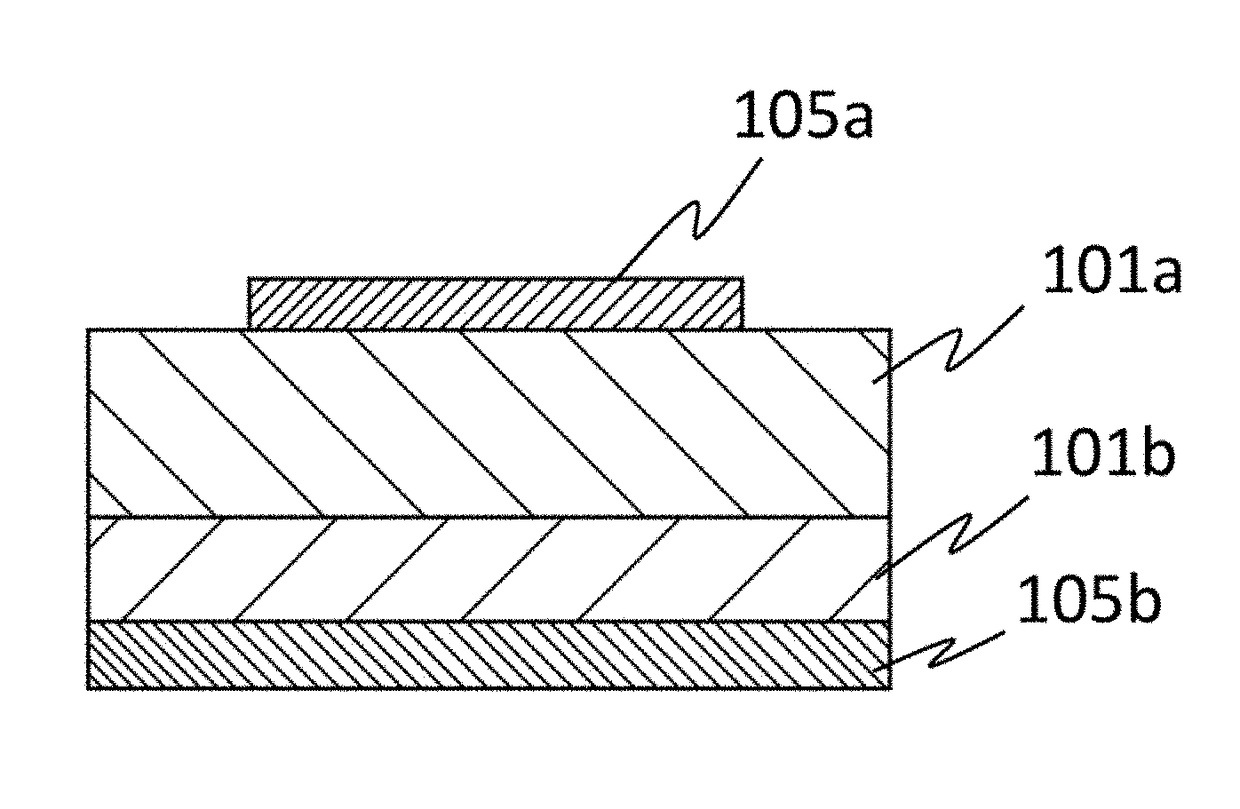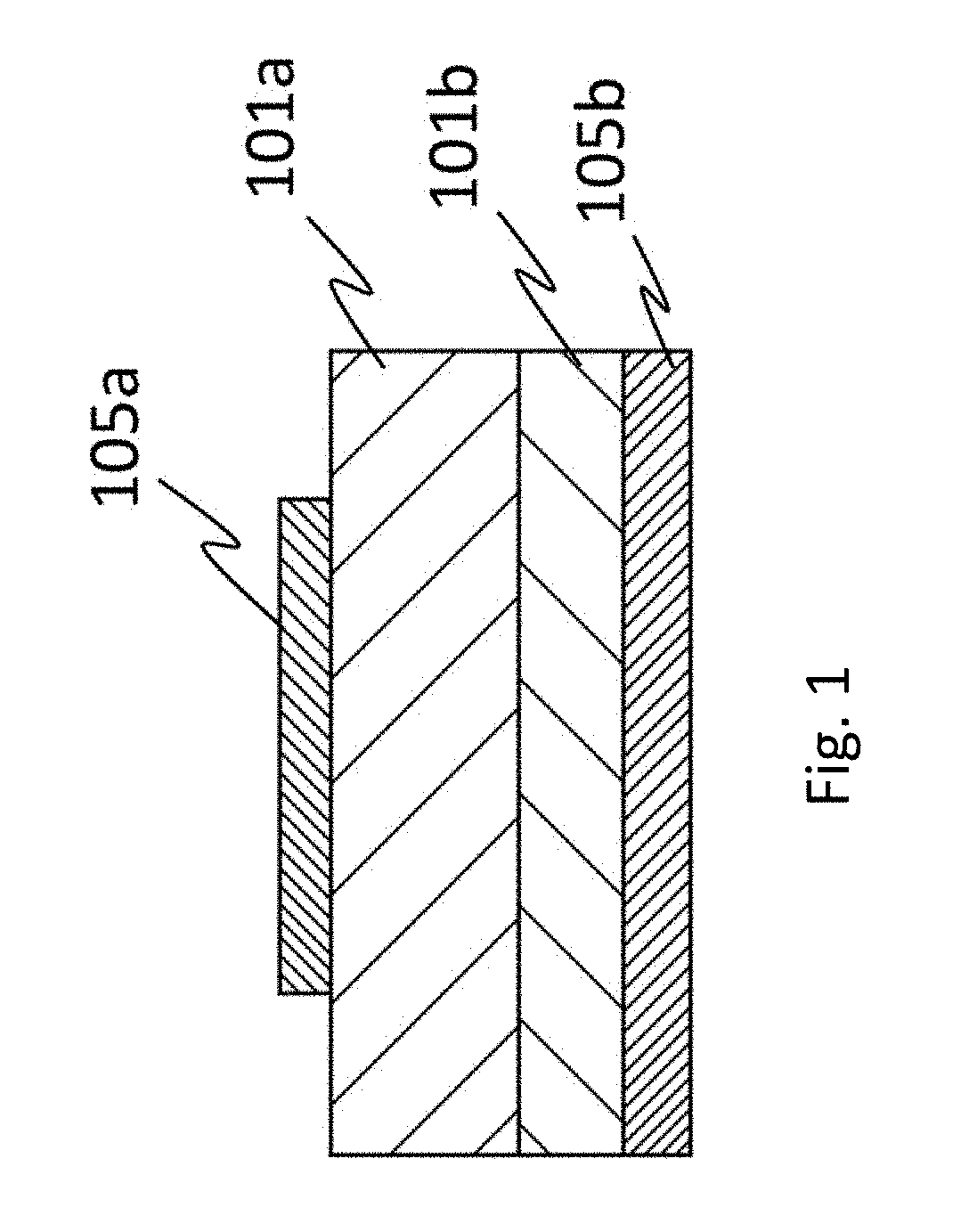Semiconductor device
a technology of semiconductors and devices, applied in the direction of semiconductor devices, basic electric elements, electrical equipment, etc., can solve the problems of impairing semiconductor properties and increasing manufacturing costs, and achieve excellent semiconductor properties and schottky characteristics
- Summary
- Abstract
- Description
- Claims
- Application Information
AI Technical Summary
Benefits of technology
Problems solved by technology
Method used
Image
Examples
example 1
[0107]1. Formation of n+type Semiconductor Layer
[0108]1-1. Film Formation Apparatus
[0109]With reference to FIG. 5, a mist CVD apparatus 1 used in the present Example is described. The mist CVD apparatus 1 included a carrier gas source 2a to supply a carrier gas, a flow regulating valve 3a to regulate a flow rate of the carrier gas discharged from the carrier gas source 2a, a dilution carrier gas source 2b to supply a dilution carrier gas, a flow regulating valve 3b to regulate the flow rate of the dilution carrier gas discharged from the dilution carrier gas source 2b, a mist generator 4 to store a raw-material solution 4a, a container 5 to keep water 5a, an ultrasonic vibration transducer 6 mounted at a bottom of the container 5, a film formation chamber 7, a supply pipe 9 connecting the mist generator 4 to the film formation chamber 7, a hot plate 8 placed in the film formation chamber 7, and an exhaust outlet 11 to exhaust the mist, the droplets, and the exhaust gas after thermal...
example 2
[0135]A semiconductor device was obtained in the same manner as Example 1 other than changing, during formation of the n+type semiconductor layer, the film formation temperature to 525° C. and the film formation time to 20 minutes. The n+type semiconductor layer had a thickness of 0.5 μm. The semiconductor device thus obtained was subjected to IV measurement. Results are illustrated in FIG. 8. The on resistance (differential resistance) was checked to be found as 0.11 mΩ cm2.
example 3
[0136]A semiconductor device was obtained in the same manner as Example 1 other than (1) containing, during formation of the n-type semiconductor layer, deuterium bromide acid at a volume ratio of 15% in the raw-material solution and changing the film formation time to 8 hours, (2) changing, during formation of the n+type semiconductor layer, the film formation temperature to 500° C. and the film formation time to 110 minutes, and (3) laminating, during formation of the first metal layer (Schottky electrode), a Ti layer and an Au layer on the n-type semiconductor layer respectively by electron beam evaporation. The semiconductor device thus obtained was subjected to IV measurement. Results are illustrated in FIG. 9. As clearly seen from FIG. 9, it is found that good semiconductor properties and Schottky characteristics are exhibited.
PUM
 Login to View More
Login to View More Abstract
Description
Claims
Application Information
 Login to View More
Login to View More - R&D
- Intellectual Property
- Life Sciences
- Materials
- Tech Scout
- Unparalleled Data Quality
- Higher Quality Content
- 60% Fewer Hallucinations
Browse by: Latest US Patents, China's latest patents, Technical Efficacy Thesaurus, Application Domain, Technology Topic, Popular Technical Reports.
© 2025 PatSnap. All rights reserved.Legal|Privacy policy|Modern Slavery Act Transparency Statement|Sitemap|About US| Contact US: help@patsnap.com



